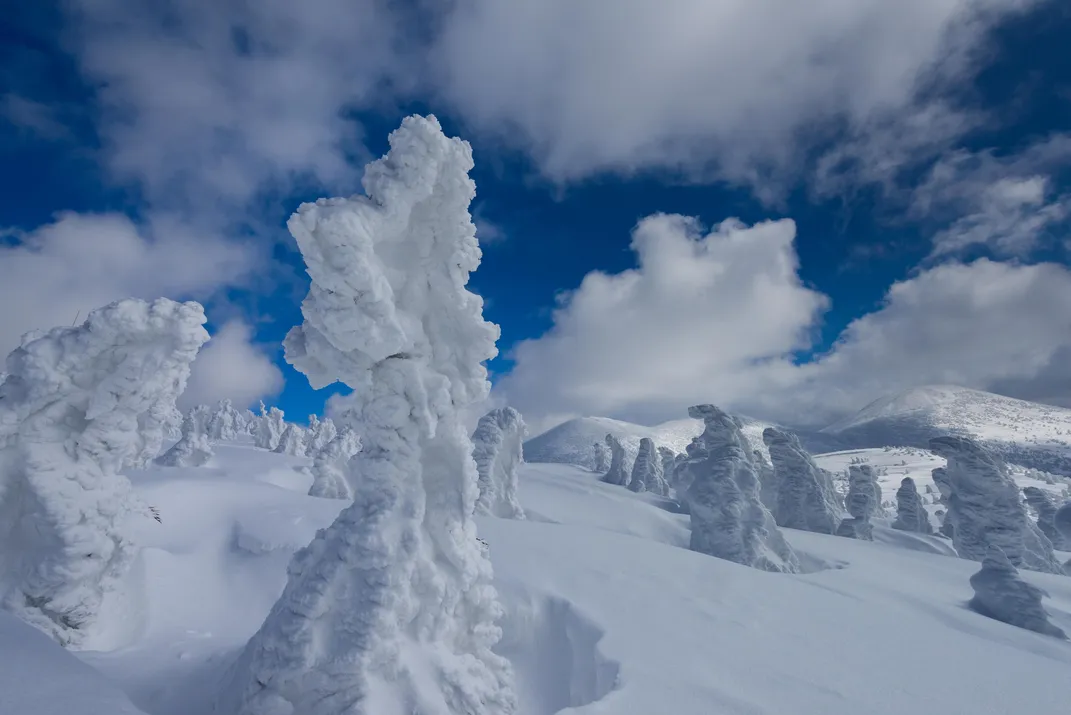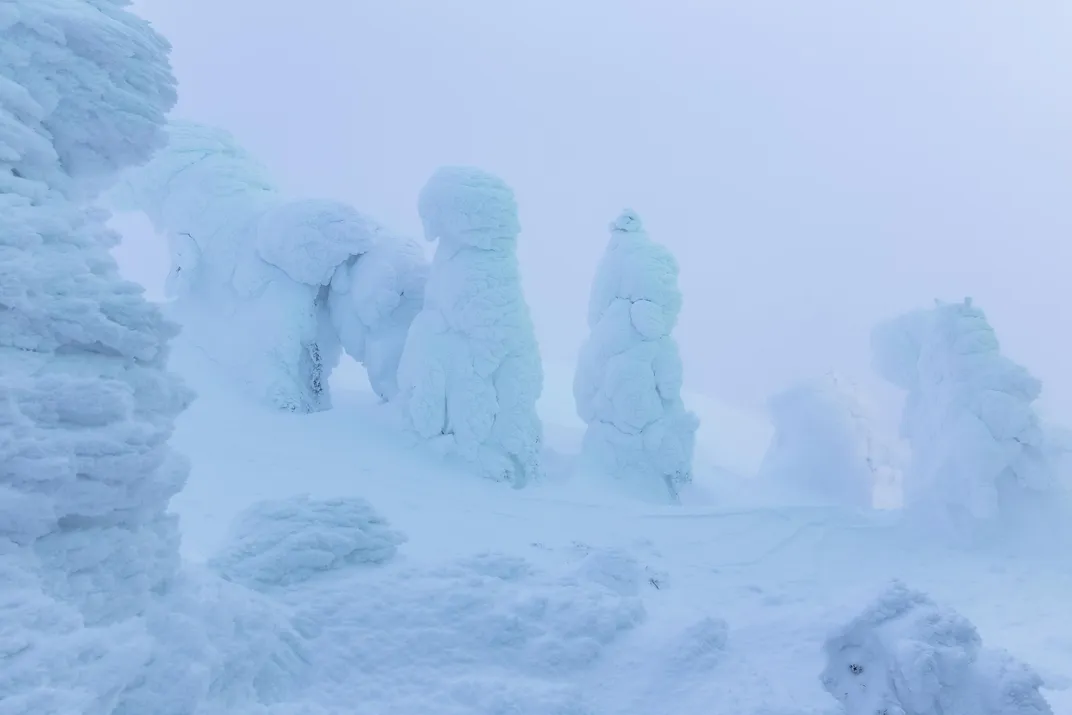Arboreal ‘Snow Monsters’ Overrun Northern Japan Every Winter
Ice and wind transform these high altitude fir trees of into real-life White Walkers
Along with death and taxes, finding shapes in clouds is one of the most universal human experiences. Most can recall at least one lazy summer day spent lying in the grass, spotting the many dogs and dragons formed by the cottony white clumps of frozen water droplets in the sky.
A more obscure and much colder version of this pastime takes place every winter in Japan’s northern Tohoku region. Intense, relentless Siberian winds blow clouds and fog over the region’s native Maries’ fir trees, enveloping them in a thick, granular coating of ice called rime. The result: Once-verdant forests are transformed into throngs of “snow monsters,” or “juhyo,” as they’re called in Japan.
The anthropomorphic suggestions in the crags, mounds and limbs of the ice-entombed trees allow the imagination to run wild. In this frozen world, icy bears and bobcats cohabitate with frosty witches, skeletons and a few rogue Yeti.
/https://tf-cmsv2-smithsonianmag-media.s3.amazonaws.com/filer/a4/ae/a4aee2b7-b6af-4ec9-b6e2-1af34bf51798/gettyimages-1084947280.jpg)
Juhyo experience their peak from late January to early March, and areas featuring the natural phenomenon can be reached in under two hours by bullet train from Tokyo. A trek into these mystical mountains isn’t for the cold-blooded, though. The mountains accumulate up to 10 feet of snow by the end of the season, and visitors can expect to be greeted by freezing temperatures and fixed strong winds. After all, who ever heard of a snow monster living in a warm, welcoming environment?
Enduring the conditions is worth it, though, to see these majestic formations up close. The Zao Onsen ski resort is one of the best places to go to walk among the giants. Visitors can hike through the mountains and pose for pictures with their new, 23-foot-tall friends, or encounter them in passing as they tear through the powder on the slopes.
For the truly cold-averse, there is a third, and arguably superior, viewing option. Enclosed cable cars run up the mountain allowing passengers to see the full scope of the monster invasion in relative warmth. At night, colorful lights illuminate the surreal scene casting eerie shadows over the landscape and allowing the imagination to wander. Perhaps it’s an army of White Walkers that even Jon Snow couldn’t manage.
/https://tf-cmsv2-smithsonianmag-media.s3.amazonaws.com/accounts/headshot/jane.png)
/https://tf-cmsv2-smithsonianmag-media.s3.amazonaws.com/filer/61/35/61358a4d-cc84-4277-99c1-dd95b750336f/gettyimages-1084947400.jpg)
/https://tf-cmsv2-smithsonianmag-media.s3.amazonaws.com/filer/a6/36/a636c8f8-460a-49eb-93dd-52c762beef5c/gettyimages-1084947418.jpg)
/https://tf-cmsv2-smithsonianmag-media.s3.amazonaws.com/filer/20/19/2019025a-344d-4106-a221-ef398fe5fb5d/istock-488276682.jpg)
/https://tf-cmsv2-smithsonianmag-media.s3.amazonaws.com/filer/33/af/33afd4f3-455f-4dd3-b22b-53bf6cbf0766/istock-603901568.jpg)
/https://tf-cmsv2-smithsonianmag-media.s3.amazonaws.com/filer/65/5a/655a5229-5db2-4ce6-a82d-074e5668b0db/gettyimages-1085388564.jpg)


/https://tf-cmsv2-smithsonianmag-media.s3.amazonaws.com/accounts/headshot/jane.png)